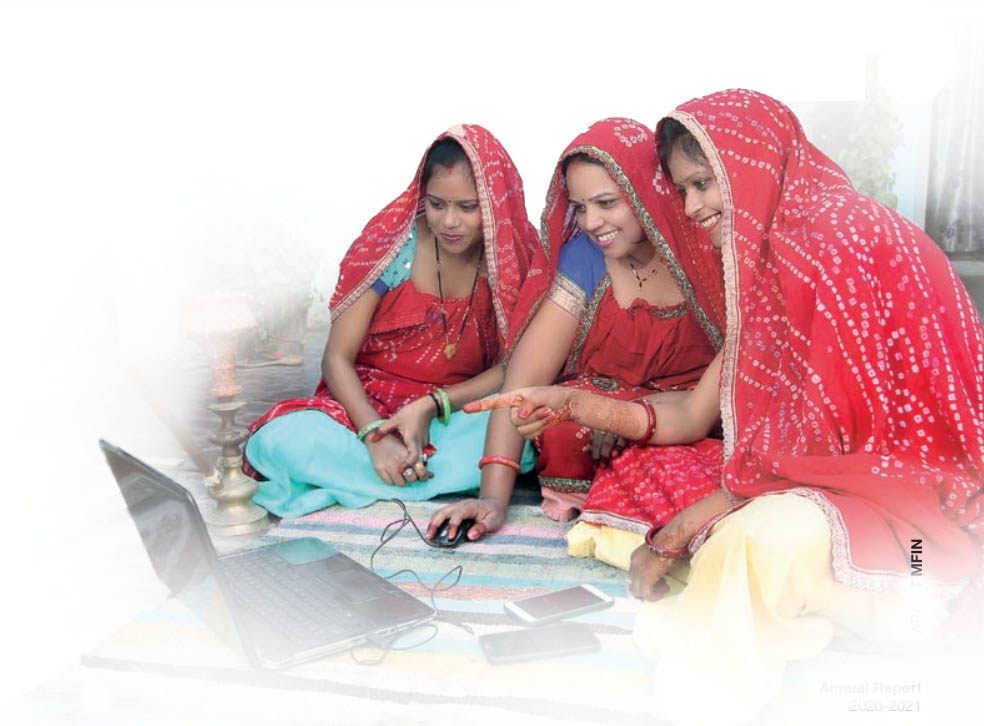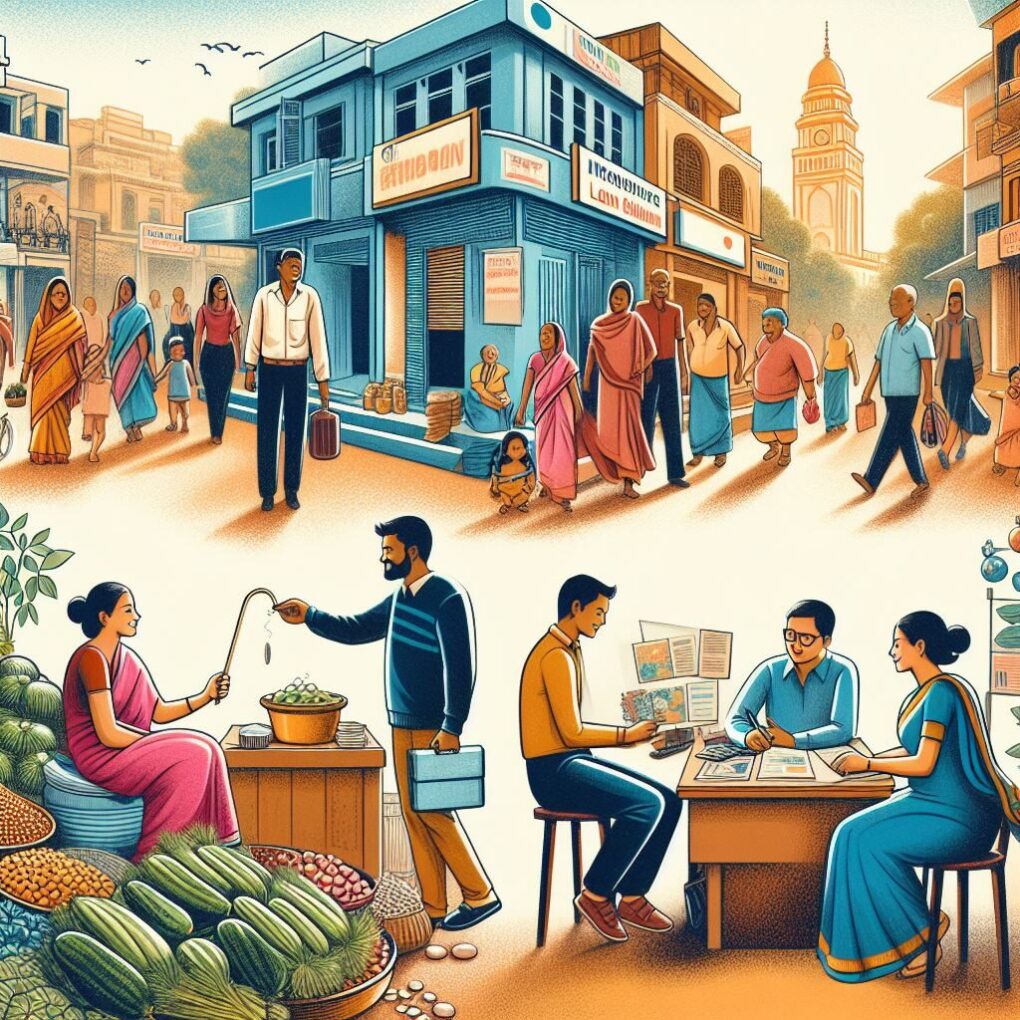Microfinance and microcredit play crucial roles in empowering individuals and communities. While these terms are often used interchangeably, they represent different concepts with unique objectives and methodologies. In this blog article, we will understand the differences between microfinance and microcredit, and their respective contributions to economic development and social empowerment in India.
What is Microfinance?
Microfinance is a general approach to financial services that aims to provide access to a wide range of financial products and services to low-income individuals, particularly those who lack access to traditional banking services.
The goal of microfinance is to promote financial inclusion, poverty reduction, and economic empowerment by offering services such as savings accounts, insurance, remittances, and credit.
Microfinance institutions (MFIs) often operate in underserved or rural areas, catering to the needs of marginalized populations such as women, small-scale entrepreneurs, and rural farmers. These institutions leverage innovative financial models and delivery mechanisms to reach clients who are typically excluded from mainstream financial systems.
Key Features of Microfinance
- Diverse Financial Services: Microfinance encompasses a wide range of financial products and services beyond just credit, including savings, insurance, and money transfer services.
- Client-Centric Approach: MFIs focus on understanding the unique needs and preferences of their clients, tailoring financial products and services to meet their specific requirements.
- All-inclusive Development: Microfinance aims to promote not only economic development but also social empowerment and financial literacy among clients, fostering long-term sustainability.
What is Microcredit?
Microcredit, on the other hand, is a specific component of microfinance that refers to the provision of small loans to low-income individuals or entrepreneurs who lack access to traditional banking services. These loans are typically used for income-generating activities, business expansion, or meeting basic household needs.
Microcredit programs often target vulnerable populations, such as women, who may face barriers to accessing formal financial services. By providing small loans without collateral requirements, microcredit enables individuals to start or expand their businesses, generate income, and improve their standard of living.
Key Features of Microcredit
- Small Loan Sizes: Microcredit loans are typically small in size, ranging from a few dollars to a few hundred dollars, making them accessible to low-income borrowers.
- Group Lending: Some microcredit programs utilize group lending models, where borrowers form solidarity groups or self-help groups to access loans collectively. This approach fosters social cohesion and mutual support among borrowers.
- Interest Rates: While microcredit loans may have higher interest rates compared to traditional bank loans due to the higher risk associated with serving low-income clients, efforts are made to keep interest rates affordable and transparent.
Differences between Micro-finance and Micro-Credit
While microfinance and microcredit are closely related, the key difference lies in their scope and objectives. Microfinance encompasses a broader range of financial services aimed at promoting financial inclusion and holistic development, while microcredit specifically refers to the provision of small loans to low-income individuals for income-generating purposes.

Statistics
- According to a 2021 report by the Microfinance Institutions Network (MFIN), the microfinance industry in India serves over 59 million clients, with a gross loan portfolio of around ₹2.34 lakh crore ($31 billion).
- The Indian microfinance sector has witnessed a 19% year-on-year growth in the gross loan portfolio as of March 2022, with a total of ₹2.48 lakh crore ($33 billion).
- As of March 2022, the microfinance sector in India has a 98.9% loan repayment rate, indicating the sector’s resilience and the borrowers’ commitment to repaying their loans.
- The Indian microfinance sector has a gender ratio of 92:8, with 92% of the clients being women, demonstrating the sector’s role in empowering women and promoting gender equality.
List of Micro Finance and Micro Credit Institutions
Here is list top Micro Finance and Micro Credit Institutions
- Bandhan Bank: Formerly a microfinance institution, Bandhan Bank is now a full-fledged bank offering a range of financial services to individuals and businesses, with a focus on serving underbanked and unbanked populations.
- SKS Microfinance (now Bharat Financial Inclusion Limited): SKS Microfinance, now known as Bharat Financial Inclusion Limited (BFIL), is one of the largest microfinance institutions in India, providing small loans to low-income individuals, primarily women, for income-generating activities.
- Ujjivan Small Finance Bank: Ujjivan Small Finance Bank offers a range of financial products and services to underserved and unbanked segments of the population, including microcredit, savings accounts, and insurance.
- Equitas Small Finance Bank: Equitas Small Finance Bank focuses on serving micro and small enterprises, low-income households, and women entrepreneurs through microfinance and other banking services.
- Janalakshmi Financial Services (now Jana Small Finance Bank): Jana Small Finance Bank, formerly Janalakshmi Financial Services, provides microfinance services, savings accounts, and other financial products tailored to the needs of low-income individuals and families.
- Utkarsh Small Finance Bank: Utkarsh Small Finance Bank offers microfinance services, savings accounts, and other banking products to empower marginalized communities and foster financial inclusion.
- Rural Development Trust (RDT): RDT operates in rural areas of Andhra Pradesh and Telangana, providing microfinance services, livelihood support, and community development programs to improve the lives of marginalized communities.
- Grameen Financial Services: Grameen Financial Services operates in various states across India, offering microfinance services, financial literacy programs, and livelihood support to empower rural and urban poor.
- Svatantra Microfinance: Svatantra Microfinance focuses on providing microcredit to women entrepreneurs in rural and semi-urban areas, enabling them to start or expand businesses and improve their livelihoods.
- ASA International India Microfinance Limited: ASA International India Microfinance Limited is part of the global ASA network and provides microfinance services to low-income individuals, particularly women, in various states of India.
Summary
Microfinance and microcredit are powerful tools for poverty alleviation and economic empowerment, offering pathways to financial inclusion and self-reliance for millions of people around the world. By understanding the nuances between these concepts, policymakers, practitioners, and stakeholders can better design and implement inclusive financial systems that benefit all members of society.
Frequently Asked Questions
What is microfinance?
Microfinance is a holistic approach to financial services aimed at providing access to savings, credit, insurance, and other financial products to low-income individuals and communities.
What is microcredit?
Microcredit refers specifically to the provision of small loans to low-income individuals or entrepreneurs who lack access to traditional banking services, typically for income-generating activities.
How do microfinance and microcredit differ?
Microfinance encompasses a broader range of financial services, while microcredit specifically focuses on small loans for income generation.
Who are the target clients of microfinance institutions?
Microfinance institutions (MFIs) typically target marginalized populations such as women, small-scale entrepreneurs, and rural farmers who lack access to mainstream financial services.
What are the key features of microcredit?
Microcredit loans are small in size, often provided without collateral requirements, and may utilize group lending models to foster social cohesion among borrowers.
What are the objectives of microfinance?
The objectives of microfinance include promoting financial inclusion, poverty reduction, economic empowerment, and fostering social and economic development.
How do microfinance institutions operate?
Microfinance institutions operate by leveraging innovative financial models and delivery mechanisms to reach underserved populations in rural and urban areas.
What are the benefits of microfinance and microcredit?
Microfinance and microcredit empower individuals and communities by providing access to financial services, enabling entrepreneurship, and improving livelihoods.
Are interest rates on microcredit loans high?
While microcredit loans may have higher interest rates compared to traditional bank loans, efforts are made to keep rates affordable and transparent to serve low-income clients.
How do microfinance and microcredit contribute to economic development?
By providing access to financial services and empowering individuals to start or expand businesses, microfinance and microcredit contribute to economic growth, job creation, and poverty alleviation.


